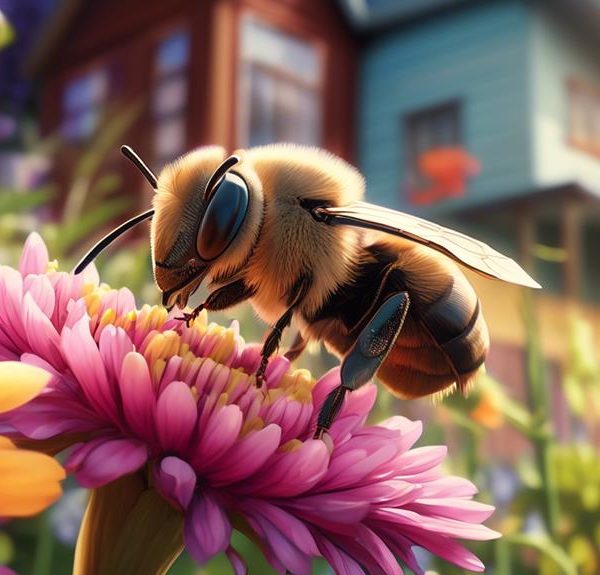Scratch beneath the surface as we delve into the intriguing realm of Mason Bees and their mysterious presence in Oklahoma.
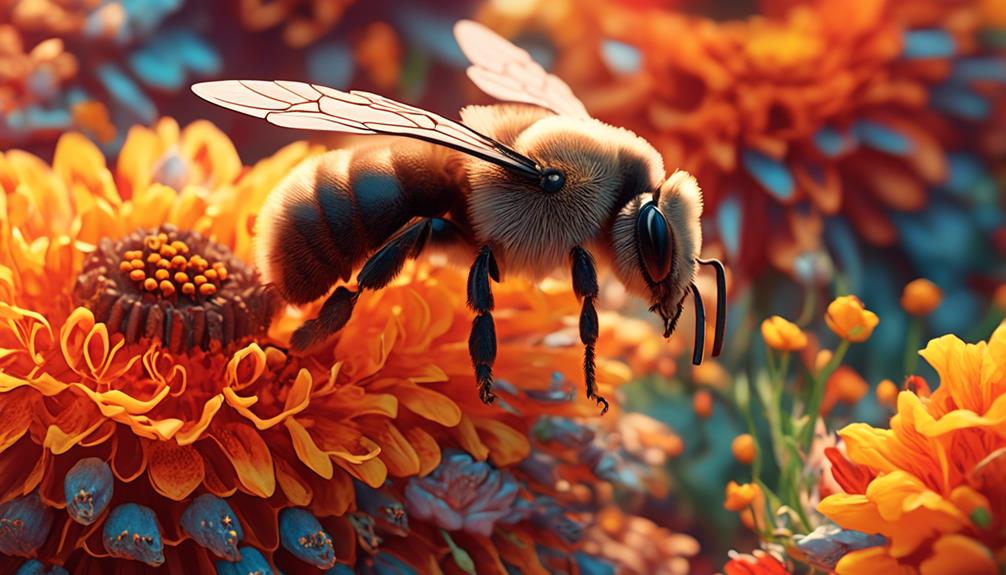
Are Mason Bees in Oklahoma?
Have you ever considered the theory that Mason Bees might be buzzing around in Oklahoma?
As unassuming as these creatures are, they play a vital role in the pollination of both our gardens and wild flora, often overlooked in favor of their honey-producing cousins.
But are these industrious insects truly present in the Sooner State? The answer might not be as straightforward as you think, and there's a lot more to uncover about these fascinating pollinators.
Key Takeaways
- Mason bees are solitary creatures that nest in small cavities and seal their nests with mud.
- They are superior pollinators, carrying pollen on their abdomens and resulting in more effective pollination.
- Mason bees have one generation per year, emerging in spring, mating, and laying eggs.
- Their solitary lifestyle, excellent pollination skills, and unique life cycle contribute to their significance in Oklahoma's ecosystem.
Understanding Mason Bees
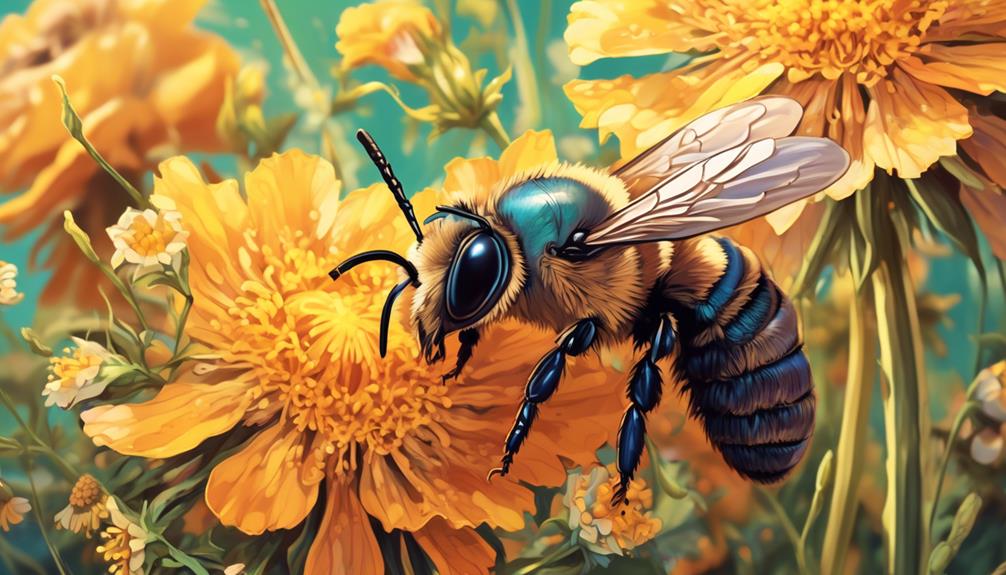
To fully appreciate the role of Mason bees in Oklahoma's ecosystem, you must first understand their unique life cycle and behaviors. Unlike honeybees, Mason bees are solitary creatures. They don't live in hives but instead nest in small cavities, often in wood or hollow stems, and seal their nests with mud – hence their name.
Your understanding of Mason bees would be incomplete without a grasp of their crucial duty as pollinators. They're superior pollinators, you see, as they carry pollen on their abdomens, resulting in more effective pollination. Their preference for a wide variety of flowers, including many native Oklahoma species, greatly increases the biodiversity of the areas they inhabit.
Mason bees' life cycle is also distinctive. They've one generation per year, with adults emerging in spring, mating, and then the females laying eggs. The larvae feed on a mix of pollen and nectar, spin a cocoon, and pupate until the following spring.
Knowing these facts grants you a glimpse into Mason bees' essential role in Oklahoma's ecosystem. Their solitary lifestyle, excellent pollination skills, and unique life cycle all contribute to their significance.
Mason Bees Vs. Honeybees
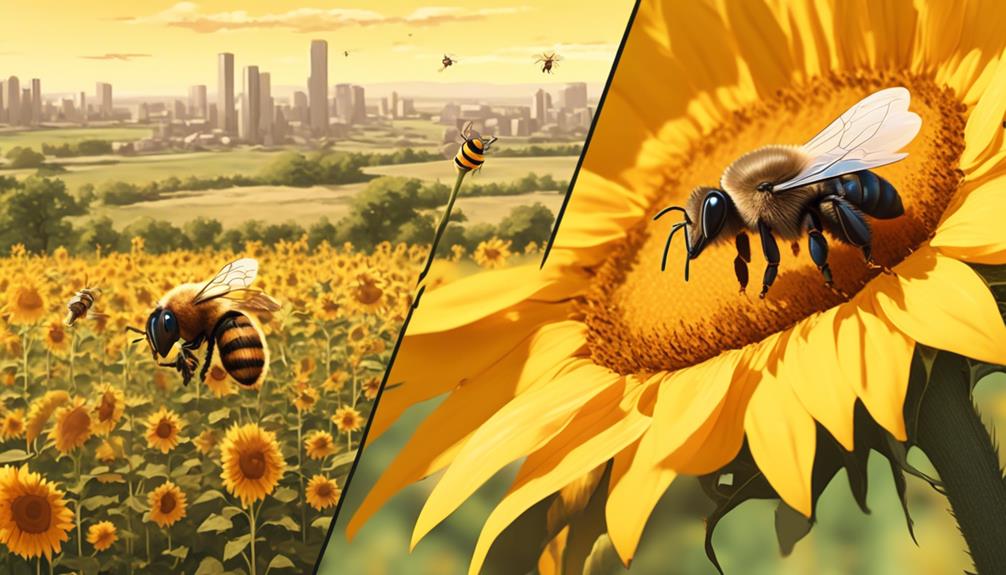
How do Mason bees stack up against honeybees, you might wonder? Well, they're quite different in several key aspects.
To start, Mason bees are solitary creatures, whereas honeybees live in large colonies. Each female Mason bee makes her own nest, while honeybees share a hive with thousands of others.
In terms of pollination, Mason bees have the upper hand. They're known as superior pollinators, able to do the work of 100 honeybees. Why? Because they carry pollen on their belly where it easily rubs off on flowers. Honeybees, on the other hand, carry pollen on their hind legs where it's less likely to fall off.
Mason bees also tend to be more docile. They're less likely to sting unless directly threatened or injured. Honeybees are more defensive, especially when it comes to protecting their hive.
Yet, honeybees produce honey, something Mason bees don't do. So, if you're after honey, honeybees are your go-to. But if you're interested in effective pollination and a peaceful coexistence, Mason bees can be a better choice.
Mason Bees' Role in Pollination

Building on their distinction as superior pollinators, let's examine the crucial role Mason bees play in the pollination process. Unlike their honeybee counterparts, Mason bees are solitary creatures. They don't live in hives but nest in pre-existing holes, often in wood or hollow stems. This characteristic, coupled with the fact that they don't produce honey, makes them less defensive and therefore more likely to pollinate freely.
You're probably wondering why these bees are called 'Mason'. It's because of their unique nesting behavior, where they use mud to seal off their egg chambers, reminiscent of masonry work. This solitary lifestyle has a direct impact on their pollination habits. Mason bees aren't bound by the need to supply a hive with pollen, so they visit a greater diversity of plants, spreading pollen more widely.
Furthermore, Mason bees are more effective pollinators because they carry pollen on their abdomen, making it more likely to rub off on flowers as they forage. They're also active earlier in the season, even in cooler temperatures, ensuring the pollination of early-blooming plants.
It's safe to say that Mason bees are unsung heroes in our ecosystem.
Habitats for Mason Bees

If you're keen to attract these beneficial insects to your garden, understanding the preferred habitats of Mason bees is vital. These solitary bees aren't hive dwellers; instead, they nest in pre-existing holes in wood or hollow stems.
Therefore, your first step should be to provide such spaces. You can do this by deploying bee houses with tubes of the right size, or by leaving sections of deadwood in your garden.
Mason bees are also not particularly fussy about their foraging grounds. They're attracted to a variety of flowering plants, so a diverse garden is a good start. Native plants are especially attractive to them.
Presence of Mason Bees in Oklahoma
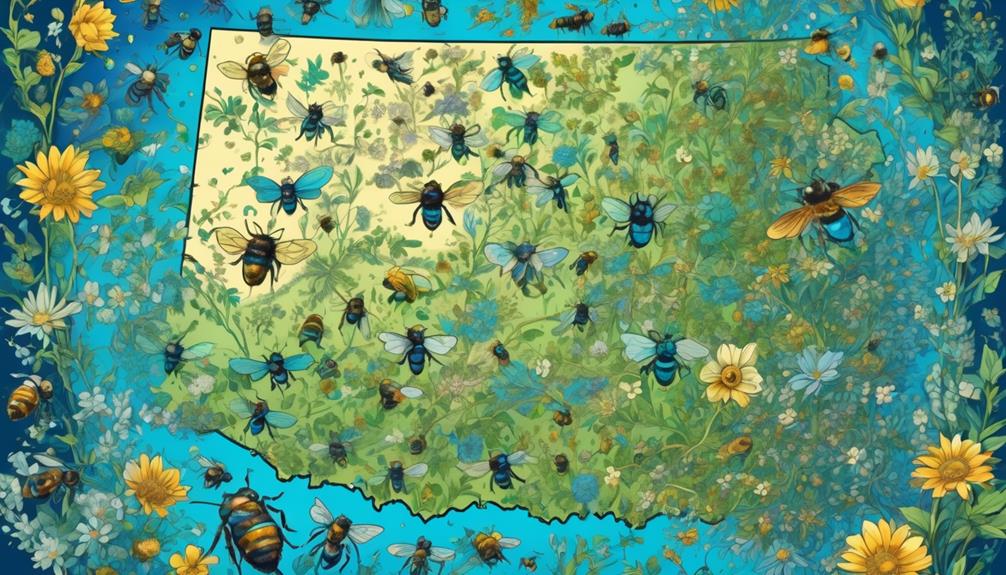
Oklahoma's diverse flora and varied landscapes make it an ideal haven for Mason bees, teeming with these industrious pollinators. You'll find them buzzing around the rich, blossoming plants, injecting life into the ecosystem through their critical role in pollination.
Mason bees, belonging to the genus Osmia, are solitary creatures. Unlike honeybees, each female is fertile and makes her own nest, often in pre-existing holes. In Oklahoma, you can find them nesting in reeds and hollow stems, or even in holes in wood made by other insects.
As a resident or visitor in Oklahoma, you'll notice that Mason bees are active early in the year, from March to June. They're particularly drawn to fruit trees, a common feature in Oklahoma's varied landscape. As they go about their work, these bees are undeterred by the state's fluctuating spring weather patterns.
Their presence in Oklahoma is a testament to their adaptability and resilience. They're less sensitive to pesticides than other bees, making them more likely to survive in areas where these chemicals are used. So, rest assured, Mason bees aren't only present in Oklahoma, but they're also thriving, playing their part in the state's biodiversity.
Conclusion
Indeed, you'll find Mason bees in Oklahoma. They're essential pollinators, often more efficient than their honeybee counterparts.
Their habitat? They prefer hollow reeds or holes in wood, making them a perfect addition to your garden. So, don't be surprised if you spot these tiny, non-aggressive creatures buzzing around your flowers.
Remember, they're not only beneficial for your green spaces but also vital for our ecosystem.

